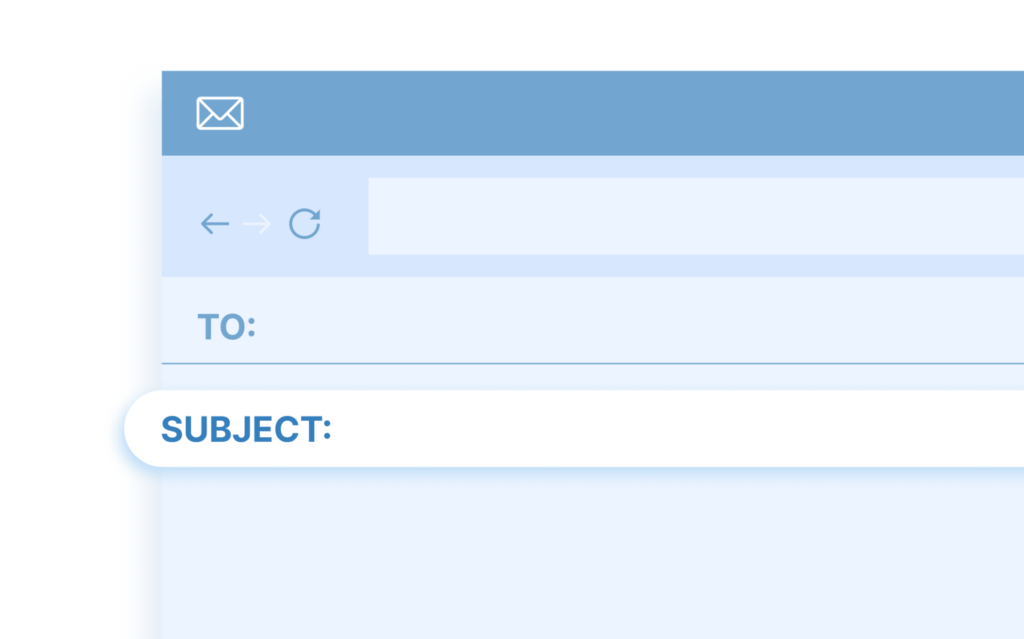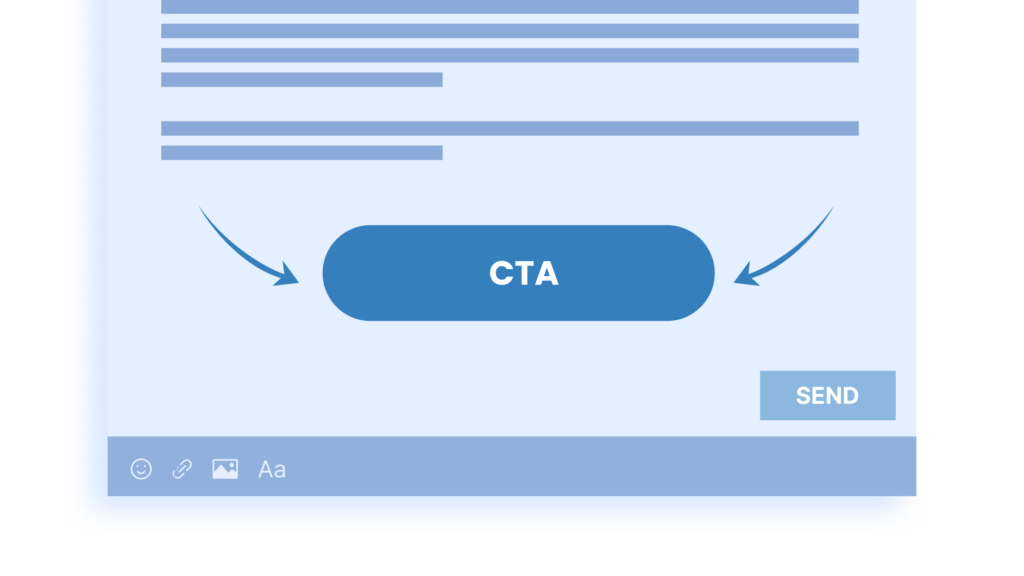Key Takeaways
- With cold emailing, the shorter the better
- 50-200 word cold emails perform the best
- The email should be all about your prospect and not you
- Don’t try to schedule a meeting directly at the end of a cold email
- Keep it real. Avoid stiff and formulaic language
- Automation is the key to leveraging cold emails to the fullest
Cold emails are integral to any sales strategy when working with prospects.
On the surface, a cold email seems simple enough. But when it comes time to write one, you may find yourself second-guessing yourself over exactly what to do.
One of the main concerns is how long a cold email should be to get the best response rate. The length of the email is one of the biggest factors that will impact the success of your cold email campaign.
To help you find the perfect length for your following cold email, we’ll explain exactly how long your cold email should be and share some best practices for composing cold emails that lead to the most meetings.

The Optimum Cold Email Length
The consensus among cold email marketing professionals is that email lengths between 50-200 words tend to perform the best.
However, that’s just a ballpark figure, and several factors can help you determine how long a cold email should be for your cold email strategy.
When Shorter Is Better
Cold sales emails should always be relatively short, but sometimes, you want to be as brief as possible.
If your target audience is already familiar with the type of product or service you offer, shorter is going to be better. In these cases, keeping your cold email under 100 words is what you should aim for.
An example is if your lead already uses a competing product and service. In these cases, you don’t need to go into much detail to pique their interest. You simply mention your value proposition.
Overall, a good length for a short message is around 70 words, with an upper limit of 90.
When To Consider A Longer Cold Email
If you’re stretching your audience or reach when building your email list, you may consider adding an extra sentence or two when writing cold emails.
This may also be needed if you’re offering a novel or new product that the prospect may not be familiar with.
But even in these cases, brevity is still the goal, and you only want to add an extra line or two if needed to create meaningful content.
Just remember, adding those extra lines means you likely need to spend a little more time editing and creating the perfect email. When you decide to go a bit longer, the information and wording you choose become more important so you don’t lose the prospect’s attention.
Prospects reading a cold email will have a short attention span (as low as a second), so the longer it is, the more scannable it needs to be.
Generally, the longer the email is above 70 words, the more perfect it must be to make a good first impression.
You can always default to the shorter side if you’re unsure exactly how long a cold email should be for your specific campaign. Overall, shorter emails perform better and work best in most cases.
Creating The Perfect Short Cold Email
A perfect cold outreach sales email will comprise three main components. Those components are the subject line, body, and call to action (CTA).
Getting all those parts right in about 125 words or less may seem difficult, but that’s the key to a high-performing cold outreach campaign.

Cold Email Subject Lines
Just like the overall email, your subject line needs to be brief. Short subject lines don’t just get higher open rates, there’s also a technical reason. On some devices, longer subject lines may not be entirely shown.
Once you go over seven words, you’re starting to get a little long, with ten words being the upper limit for the ideal length.
The subject line serves one purpose: to get the recipient to open the email. Don’t use the subject line to explain who you are or go into detail about your offer. That’s what your email body is for.
A catchy subject line is what we are going for and nothing else.
Subject lines should be something that immediately creates curiosity. So, you’ll want to use short questions, recent industry news, or common customer pain points and concerns.
Finally, consider using personalization if appropriate. Lack of personalization is one reason why marketing isn’t successful. Case studies have shown that personalization can yield higher response rates. The key is to use personalization appropriately and casually. For example, using a first name.
Too much personalization can cause suspicion and seem intrusive, so keep it short and casual.

Email Body
Before you begin composing your email body, it’s important to remember that almost every cold email will be scanned, not read.
With that in mind, your email body should be separated into very short paragraphs of 1-2 sentences each and then a line break before the next paragraph.
This allows for easy scanning when opened and increases the chances your lead will make it to the call to action.
One of the biggest mistakes people make when creating cold emails is spending too much time explaining who they are and their credentials. After your CTA, you should save your personal information for a concise email signature.
Thoroughly introducing yourself early on may seem like a good idea to build trust and legitimacy, but in practice, it simply doesn’t work. Prospects aren’t concerned with your background or accomplishments at this stage.
Another reason to keep the introduction short is that every cold email should be about the lead, not you. You’ll achieve higher response rates when you offer to solve the lead’s problems since that will make them reach out for more information.
So always remember, it’s about the lead, not about you. This means your introduction should be a follow-up to your subject line.
If your subject line asks a question, your first line of the email body should begin answering the question.
The only time you start with your name and company is if you are asking for another contact. For example, when trying to source a contact higher up in the chain of command.

The Call To Action
This is the closing of your email, and it tells the prospect exactly what they should do and how to take the next step.
Generally, you don’t want to try to set up a meeting at this point. Committing to a meeting is too much to ask at this point. Even worse is to include a link to your calendar and then ask the prospect to set up the meeting.
Instead, focus on why the lead should reply to you and exactly what happens next. Even better is offering them something they want if they reply.
One of the things that prevents replies is that the prospect doesn’t know exactly what will happen next. Will they get hit with a huge sales pitch? Will they be asked a bunch of intrusive questions about their business?
All of these thoughts prevent the lead from following your CTA.
Keep your CTA casual but focused, and tell the prospect exactly what will happen when they reply.
In most sales situations, buyer hesitation comes into play when they don’t know exactly what comes next. Let the lead know what will happen when they reply; it will dramatically improve your response rate.

Focus On One Thing In Each Email
Another common mistake in cold emails is to focus on too many things. If your company offers various digital marketing services, you don’t want to mention all of them in a cold email.
Your cold emails should be laser-focused on one specific offer or service and request a very specific value proposition for the prospect.
Refine the service or solution you offer to its simplest form and easiest-to-understand benefit. That’s the focus of your email.
When people ask how long a cold email should be, they usually wonder what to include. By focusing on one thing, you can more easily keep the email as short as possible.

4 Strategies For Successful Cold Email Campaigns
Microsoft famously conducted a study showing that people had an attention span of about 8 seconds. While this study has been criticized for being overly generalized, you should assume you only have a few seconds to grab someone’s attention when it comes to cold emails.
With that in mind, here are some strategies to make those few seconds count.
1 – Always Try To Improve
The first email and subject you write will probably not be your best.
The key is always to improve your emails based on metrics and personal experience.
Revisit your emails regularly and read them as if you were a prospect. It’s not uncommon that you’ll find ways to improve them when revisiting them.
2 – Track Your Metrics
If you’re sending hundreds of cold emails per week, you need to be tracking metrics. This will allow you to conduct A/B testing to discover which emails and subject line combinations work best.
Remember that the metrics don’t lie and are your only insight into what the recipients think of your cold emails. Always go with your metrics, and never assume you understand your prospects more than the metrics tell you.
3 – Think Like Your Prospects
One of the most common mistakes when creating cold email campaigns is forgetting about the prospect and their problems. You need to really put yourself in their mindset. Try to feel what it’s like to be in their position and what they want to be offered.
Browse social media or forums where your potential customers ask business-related questions. Use what you learn to fine-tune your emails and subject lines so they speak directly to your prospect’s needs.
4 – Automate Your Campaign
Automation is the key to effectively scaling your cold email campaigns. You can reach more prospects in less time than ever by leveraging the latest digital tools.
Automation also prevents leads from falling through the cracks due to a missed follow-up email or other mistake.
Related Article: How Many Follow-Up Emails Are Too Many
Start Turning Prospects Into Customers
Cold emails can be one of the most cost-effective tools for turning prospects into customers. However, creating the perfect email and subject line can be difficult. It can also be difficult to scale your cold emailing efforts without constantly monitoring your email’s performance metrics.
At Retreva, we’ve designed an automated system to create and manage your cold emails. You simply enter your prospects and tell us about your company and what you offer. Retreva uses proven cold emailing strategies to create the perfect sequence of emails.
Then, Retreva sends the emails in the proper sequence, and you are notified when a prospect is ready to set up a meeting.
Retreva removes the trial and error of writing cold emailing so you can focus on closing the sale and boosting growth.
Take the guesswork out of your cold email outreach with Retreva and sign up for a free trial today.


